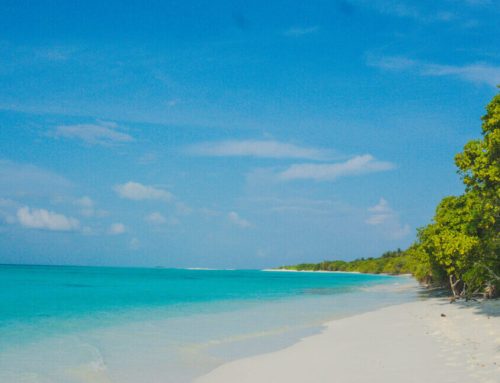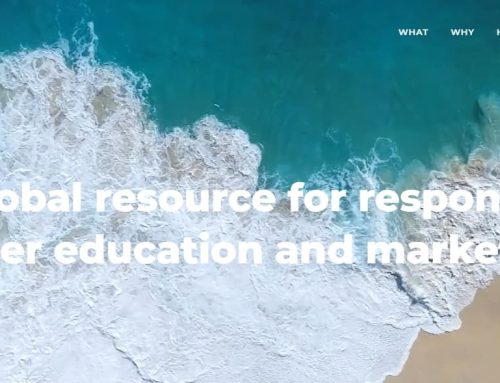Destination Stewardship Report – Summer 2023 (Volume 4, Issue 1)
This post is from the Destination Stewardship Report (Summer 2023, Volume 4, Issue 1), a publication that provides practical information and insights useful to anyone whose work or interests involve improving destination stewardship in a post-pandemic world.

Tulpar Kol Lake offers stunning views of the Alay Mountains and Lenin Peak. [Photo courtesy of Green Destinations]
Using Handicrafts and Cultural Tourism to Alleviate Poverty in Kyrgyzstan
Another winner from the Top 100 – Every year, Green Destinations organizes the Top 100 Destination Sustainability Stories competition, which invites submissions from around the world – a vetted collection of stories spotlighting local and regional destinations that are making progress toward sustainable management of tourism and its impacts. From the winners announced this year, we’ve selected two more stories, this time from Brazil and Kyrgyzstan, that showcase different reasons for engaging the local community. Synopses by Devika McWalters. Top 100 submission by Imanaly Turkbaev, Project Manager, the Swiss Small Business and Income Creation Programme Bai Alai Program
Supporting Women Through Community-Based Tourism

Women showcase handmade decorative rugs and other handicrafts at the annual mountain tourism festival. [Photo courtesy of Green Destinations]
CBT Alay developed a ten-year tourism development strategy aligned with the national sustainable development agenda. Tourism offerings included nomadic home experiences with the Kyrgyz people, staying in a yurt, and nature- and Great Silk Route-oriented activities.
One of the development targets was to support local women, who – like other artisans around the world – were making handicrafts as a hobby or leisure activity but did not see the benefit or income potential of integrating it into tourism experiences. As a result of a partnership with the local business women’s union, poverty has been reduced by 9% in just four years by engaging women and providing them with income-generating opportunities in the handicrafts and tourism sectors.
Key Steps Taken
- Partnering with the Business Women of Alay Public Union (BWA) to give artisans financial, technical, and organizational support to produce, package, and sell a wide range of products to tourists.
- Retail and commercial channels were established to sell ethnic clothing; accessories; national ornaments; naturally dyed wool- and cotton-based products; and other traditional crafts that were at risk of disappearing or being forgotten.
- Training workshops that included women of all ages, providing mentoring and cross-generational knowledge-sharing.
- Involving spouses to mitigate conflict due to patriarchal and cultural norms being challenged by empowering women.
- BWA members support each other by taking turns with daycare.
- Creating partnerships on all levels, including local producers; business partnerships; public authorities; tourism companies, associations, operators, and hotels; as well as local and online retail and commercial channels.
- Working with the local municipality’s leadership on legal barriers, disseminating information, and coordinating with the regional and national government bodies.
Results
- Poverty in Alay was reduced from 57% in 2017 to 48% in 2021.
- New tourism nature-based and cultural experiences for Alay include master classes and showcases for local handicrafts and demonstration of Kyrgyz traditions and games.
- Tourist numbers have grown from 4,000 to 16,500 in four years. The average spending increased from $15 to $50 USD/day. CBT Alay sales more than doubled from 2017 to 2021 ($1,400 vs. $3,020).
- Alay has received international coverage in blogs, reviews, and publications for its sustainability principles and cultural experiences.
- BWA’s beneficiaries rose from 10 women in 2014 to 324 in 2021, with an average age of 40.
- Sales by BWA members went from $0 to KGS 317, 000 ($4,000 USD) in just four years.
- CBT Alay’s partnership with BWA has led to the international exporting of handwoven fabric made from sustainably sourced organic cotton and final products certified from Kyrgyzstan. (Europe 39%; USA 29%; Russia 13%; Kazakhstan 11%; Japan 8%.)
- BWA distributes and sells products on multiple foreign and domestic online platforms, making up 40% of their sales.
- The female artisans of Alay have not only gained valuable business and financial skills and income but have also increased their self-esteem and support from their husbands.
- Alay women now serve as mentors and trainers in neighboring communities interested in replicating their success.
- Kyrgyzstan’s cultural and national heritage and artisan crafts are being preserved and passed on to new generations and visitors from around the world.




